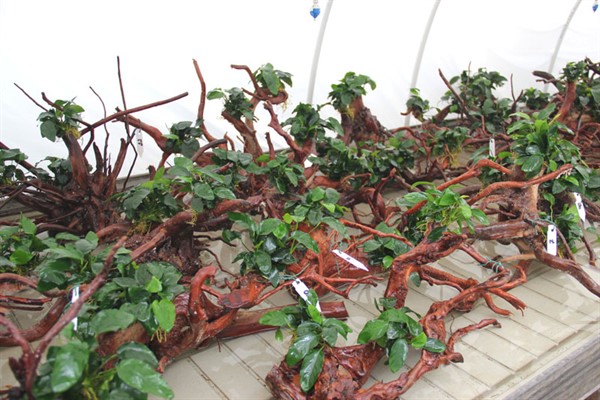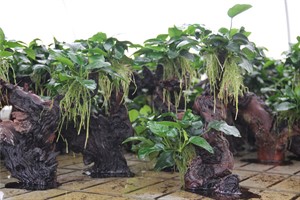Plant Decor

Decorative Beauties
Some well-known aquarium plants, such as Anubias and Microsorum, have developed over the course of evolution as "epiphytes". They naturally occur near cascades and waterfalls, which provide an enormous current in the rainy season. These rheophytes (the botanical term), grow firmly anchored on stones and roots.

We achieve optimal conditions in production in what we call, "climate tents", or "mini greenhouses". These are located within a full-sized greenhouse. Relatively strong shade and a spray system ensure a tropical rainforest climate.
The production of our decorative beauties is labor-intensive and requires patience and care, especially with the smaller filigree roots and stones.
Natural materials at a glance
Mangrove wood
–also called driftwood and is considered a classic to aquaristics. It is rich in structure and highly versatile. Our wood containing a suction cup for the side or rear window of the aquarium are something special.
Spiderwood
– these bizarre roots only became well-known thanks to an aquascaping trend. The wood is an Asian type of azalea with an incredible variety of shapes - perfect for a particularly natural design.
Lava stone
– Lava stones are water-neutral and, depending on their origin, also light and porous. They're therefore ideal for many epiphytes and mosses. Their reddish color provides a striking contrast to the green plants.
Coco Cave
- planted coconut halves not only look decorative, but also serve as a popular retreat for different aquarium inhabitants, including catfish and shrimps.
_____________
Interested in learning more?
Check out the full range of Dennerle Decor Plants
